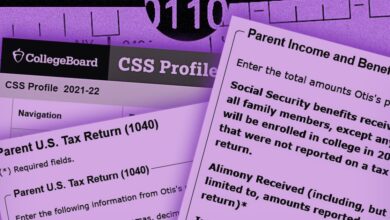The Latest College Scorecard Update Is Out. Individual Institutions Are Back in the Spotlight

The U.S. Department of Education on Monday updated its signature tool for researching college affordability and return on investment, making it once again possible to see how much alums of individual colleges earn after graduation.
The institution-level earnings data was among the metrics removed from the College Scorecard in 2018, during the Trump administration.
With the update, a search of four-year colleges in Massachusetts, for example, results in a list of institutions automatically ordered by highest earnings. Olin College of Engineering leads the group, with median annual earnings for students who began college there 10 years ago at $133,000. On the other end of the spectrum is Northpoint Bible College, with median earnings of $33,000.
Also restored by the update is context about how each institution’s graduation rates, median earnings, and average annual net price match up with similar institutions nationally.
The updated scorecard is likely to further fuel national conversations about whether college degrees pay off, though it may offer more nuance than has been available in past versions. The new version of the scorecard now shows the share of graduates of individual institutions who earn more than the typical high-school graduate.
The update also includes disaggregated median earnings by family income, dependent status, and gender. A collection of higher-education research groups asked the Education Department last summer to add those data to make the scorecard more useful to students. The recommendation, one of several by the Postsecondary Data Collaborative, was to include disaggregated median earnings (rather than mean as before) so that the differences in earnings among low-income students and women could be better understood.
“These changes, including increased visibility into workforce outcomes and appropriate contextual information, promote transparency at a crucial time for our country and for our students,” Mamie Voight, president and chief executive of the Institute for Higher Education Policy, a member of the collective, said in a statement. “Covid-19 disruptions have further complicated students’ college decisions processes, making clear, reliable information about the return they can expect from their investment all the more critical.”
The update also provides new data on the cumulative loan debt of student borrowers at the institution level and by field of study at each institution. New federal student-loan-repayment rates for institutions are available as well.
The scorecard includes data only from those who get some form of federal financial aid, so it’s not representative of all students.
Source link






